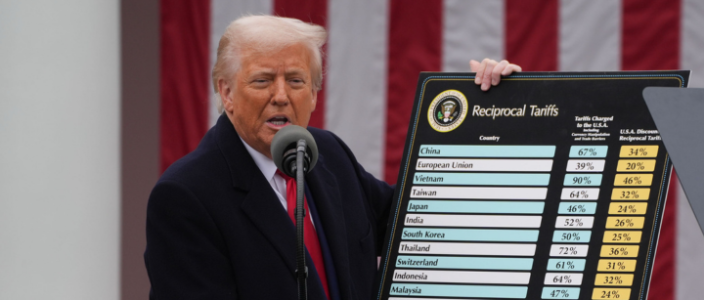from grok:
President Joe Biden imposed and expanded several tariffs, primarily targeting Chinese imports, while maintaining most of the tariffs from the Trump administration. Below is a summary of the key tariffs imposed or modified during Biden's presidency, based on available information:
1.
Section 301 Tariffs on Chinese Imports (Expanded)
May 2024 Announcement: Biden announced significant tariff increases on $18 billion worth of Chinese goods in strategic sectors to counter China's unfair trade practices, such as intellectual property theft, forced technology transfers, and overcapacity. These tariffs were finalized in September 2024 and expanded in December 2024. Specific increases include:
Electric Vehicles (EVs): Tariff rate increased from 25% to 100% in 2024, effectively acting as a ban on Chinese EVs due to their low import volume (only 2% of U.S. EV imports).
Semiconductors: Tariff rate increased from 25% to 50% by 2025 to protect U.S. investments in semiconductor manufacturing under the CHIPS and Science Act.
Solar Cells: Tariff rate increased from 25% to 50% in 2024 to support domestic solar manufacturing
Lithium-ion EV Batteries and Critical Minerals: Tariff rate increased from 7.5% to 25% in 2024
Steel and Aluminum: Tariff rate on certain products increased from 0–7.5% to 25% in 2024 to shield U.S. industries from Chinese overcapacity
Ship-to-Shore Cranes: Tariff rate increased from 0% to 25% in 2024, with exclusions for cranes ordered before May 14, 2024, and entering before May 14, 2026
Medical Supplies:
- Face masks: 25% tariff in 2024, increasing to 50% in 2026.
- Syringes and needles: Tariff rate increased from 0% to 50% in 2024.
- Personal protective equipment (PPE): Tariff rate increased from 0–7.5% to 25% in 2024.
Solar Wafers, Polysilicon, and Tungsten Products: Effective January 1, 2025, tariffs were set at 50% for solar wafers and polysilicon and 25% for tungsten products to support the U.S. clean energy supply chain
Rationale: These tariffs aimed to protect American workers and businesses in strategic sectors like clean energy, semiconductors, and critical minerals, aligning with Biden’s investments in domestic manufacturing through the CHIPS and Science Act and the Inflation Reduction Act. They were described as targeted to minimize consumer price impacts, given the limited import volume of these goods from China.
Continuation of Trump-Era Tariffs
Biden maintained most of Trump’s Section 301 tariffs on approximately $300 billion of Chinese goods, which covered about 60% of U.S.-China trade with rates up to 20%. These tariffs, implemented in 2018, targeted a broad range of Chinese products.
Tariffs on Russian Goods
In February 2023, Biden increased tariffs on various Russian goods after revoking Russia’s most-favored-nation (MFN) status in 2022, following the invasion of Ukraine. These goods faced higher “Column 2” rates (averaging 20%) under the Harmonized Tariff Schedule, as established by the Smoot-Hawley Tariff Act
Political Motivation: Biden’s tariffs were partly a response to political pressures, as both parties shifted away from free-trade policies to protect American industries. They were also framed as a counter to China’s unfair practices and a complement to domestic investment in key sectors



